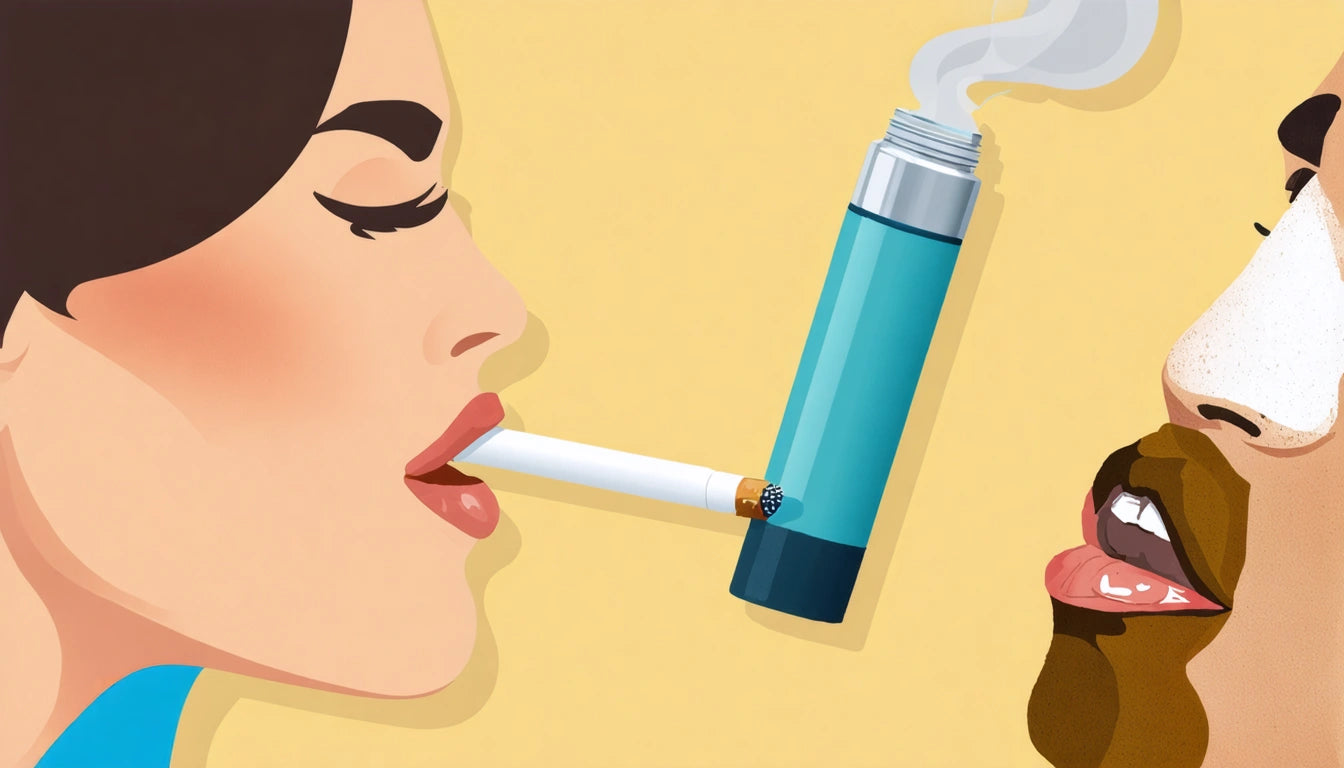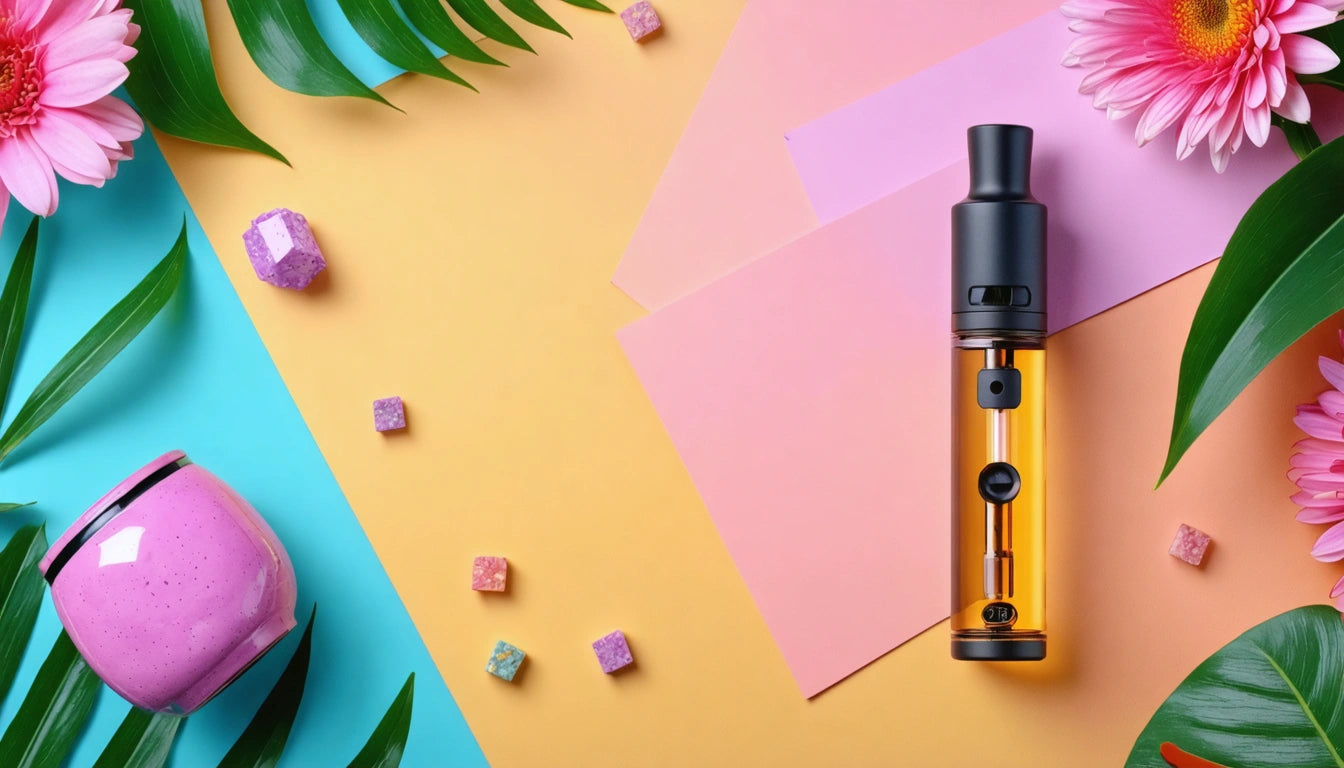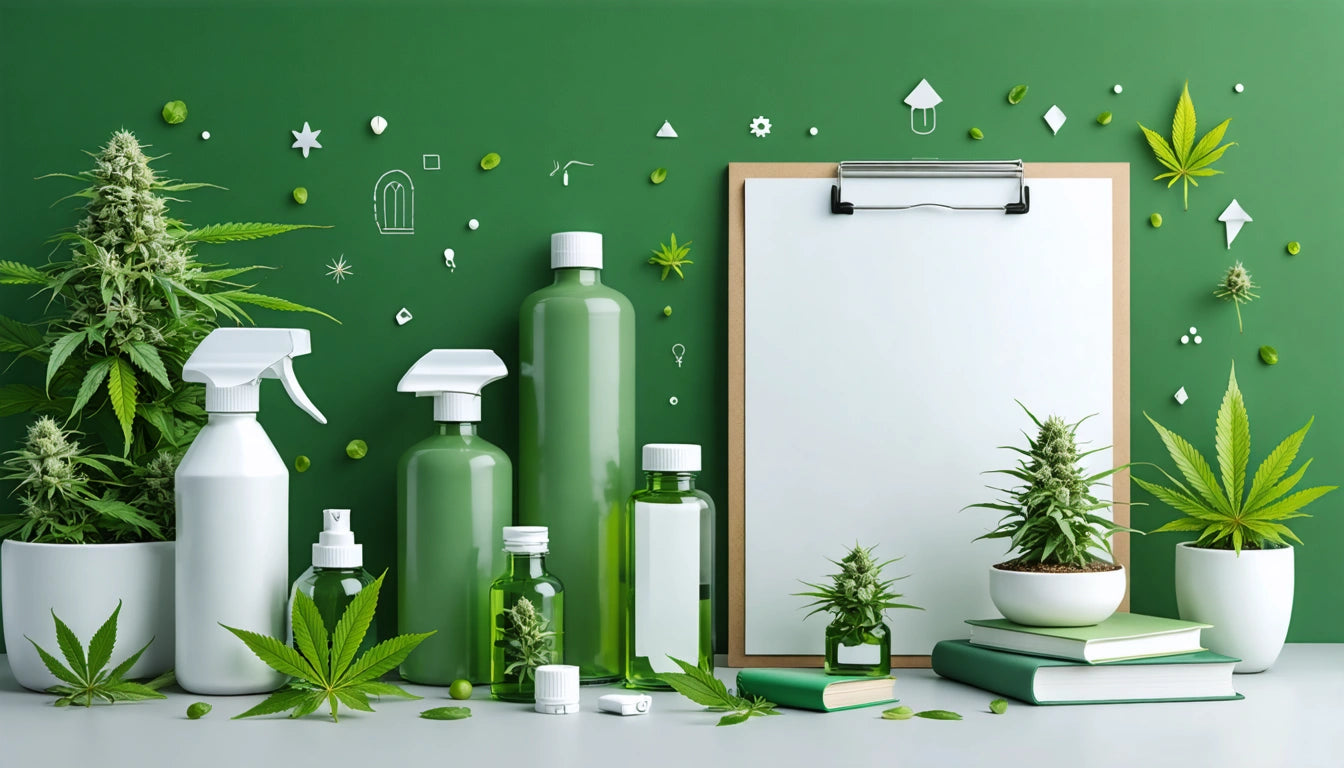Smoking, Vaping, and Inhaler Use: Understanding Risks and Recovery
The relationship between smoking, vaping, inhaler medications, and respiratory health involves complex interactions that many users don't fully understand. Whether you're wondering about marijuana absorption methods, the timing between using an inhaler and smoking, or how long your lungs need to recover from vaping, this guide provides evidence-based information to help you make informed decisions about your respiratory health.
Smoking, Vaping, and Respiratory Health
Smoking and vaping both introduce foreign substances into the lungs, though through different mechanisms and with varying levels of impact. While traditional combustion creates numerous byproducts through the burning process, vaporization typically produces fewer harmful compounds but still introduces substances that can irritate lung tissue.
According to respiratory health experts, both smoking and vaping can:
- Temporarily impair ciliary function (the tiny hair-like structures that help clear mucus)
- Cause inflammation of the airways
- Reduce oxygen exchange efficiency
- Lead to chronic bronchitis symptoms with regular use
For those interested in reducing coughing when smoking or vaping, proper technique and quality equipment make a significant difference in the experience.
Marijuana Absorption Methods
Can You Absorb Marijuana Through the Mouth Without Inhaling?
Yes, cannabinoids can be absorbed through the mucous membranes in the mouth, though less efficiently than through inhalation. This sublingual or buccal absorption is the principle behind tinctures, lozenges, and some edibles designed to be held in the mouth.
When cannabis compounds are absorbed through oral mucosa:
- Effects typically begin within 15-45 minutes
- Bioavailability is lower than inhalation but higher than swallowed edibles
- The experience may be milder but potentially longer-lasting than smoking
- First-pass liver metabolism is partially bypassed
For consistent dosing with sublingual products, many manufacturers use precision filling equipment for accurate liquid measurements in tinctures and oils, ensuring reliable absorption rates.
Inhalers and Smoking Interactions
Can You Use an Inhaler After Smoking?
Yes, you can use an inhaler after smoking, and in some cases, it may be necessary to relieve bronchospasm triggered by smoke irritation. However, this doesn't mean it's an ideal practice. Smoking before using an inhaler may:
- Reduce the effectiveness of the medication
- Require higher doses to achieve the same relief
- Contribute to medication tolerance over time
- Potentially worsen underlying conditions like asthma
If you have a respiratory condition requiring an inhaler, exploring smoking alternatives may be beneficial for your long-term health.
How Long After Using an Inhaler Can You Smoke?
Medical professionals generally recommend waiting at least 30-60 minutes after using a rescue inhaler before smoking anything. For maintenance inhalers containing corticosteroids, a longer wait time of 1-2 hours is preferable.
This waiting period allows the medication to:
- Properly distribute throughout the airways
- Begin reducing inflammation or bronchospasm
- Create a protective effect before exposure to irritants
The same principles apply when asking if you can use an inhaler after smoking cannabis. While it's not medically ideal to smoke before using prescribed respiratory medications, many patients with conditions like asthma who also use cannabis find they need to use their inhalers afterward.
Lung Recovery After Vaping
How Long Do Lungs Take to Recover From Vaping?
Recovery time from vaping depends on several factors, including frequency of use, type of product vaped, and individual health status. Research suggests:
- Short-term irritation may resolve within 1-3 days after stopping
- Ciliary function begins improving within 1-2 weeks
- Significant improvement in lung function can occur within 1-3 months
- Complete cellular recovery may take 6-12 months with heavy use
For those concerned about lung health, understanding the impact of cannabis on respiratory function can help inform healthier consumption choices.
Timing Considerations
How Long Should You Wait to Smoke After Eating?
While there's no strict medical guideline specifically about smoking after eating, waiting 30-60 minutes after a meal before smoking may help:
- Reduce potential nausea or discomfort
- Allow proper digestion to begin
- Minimize acid reflux that can be exacerbated by smoking
- Prevent potential interactions with oral medications taken with food
Some users report that smoking immediately after eating can intensify effects due to changes in blood flow and metabolism following a meal. For those interested in optimizing their experience, mastering proper inhalation techniques can also make a significant difference.
Practical Health Recommendations
For those balancing cannabis use with respiratory health concerns, consider these evidence-based recommendations:
- If you require an inhaler, prioritize your prescribed medication schedule over recreational smoking or vaping
- Consider lower-temperature vaporization instead of combustion to reduce respiratory irritation
- Explore non-inhalation methods like tinctures, edibles, or topicals if you have significant respiratory concerns
- Allow adequate recovery time between smoking sessions, particularly if you've experienced respiratory symptoms
- Stay hydrated to help maintain mucous membrane health and assist with natural lung clearing mechanisms
- Consult with healthcare providers about potential interactions between cannabis and any respiratory medications
While cannabis use and respiratory medication aren't ideal companions, understanding the timing, interactions, and recovery processes can help users make more informed decisions about their consumption habits and health management strategies.











Leave a comment
All comments are moderated before being published.
This site is protected by hCaptcha and the hCaptcha Privacy Policy and Terms of Service apply.